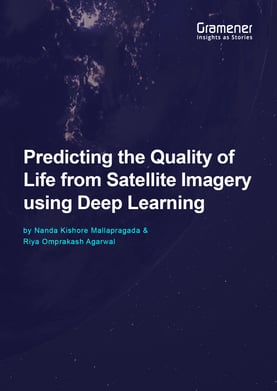Satellite Imagery Solution for Social Good | White Paper by Gramener

[White Paper] - Using Satellite Imagery and
Deep Learning to Predict Quality of Life
Download the white paper to discover a novel approach to calculating Quality of Life in the U.S. at county level. We obtain data using open-access satellite images and leverage Deep Learning.
Throughout the white paper you will learn:
- How we can capture metrics like vegetation index and water index at county level in the United States using open-access satellite data
- A novel approach for assigning weights and calculating Quality of Life in these locations using satellite and other data
- How to interpret the results and assign a QoL metric for each county

